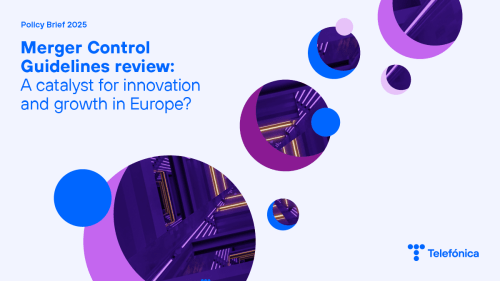What used to require weeks of production and expensive equipment can now be created on a laptop screen or even a mobile phone. Creativity is no longer tied to access to tools, but to the intention and judgement of those who exercise it. And that radically changes the rules of the game: now the ability to create at a professional level is within everyone’s reach, and the real distinction lies in those who exercise it with sensitivity, consistency and a keen aesthetic sense.
For years, corporate marketing has placed functionality above all else. The essential thing has been for the message to reach its destination and for the proposal to be perceived with total clarity, specificity and ease of understanding, whether for a broad audience or a specific niche. All of this remains, indisputably, the essential pillar of corporate communication. However, as we immerse ourselves in an ocean of information — presentations, PDFs, videos, campaigns, newsletters, dashboards, social media, WhatsApp — we often underestimate an element that deserves our full attention: aesthetics.
The importance of aesthetics
We are not talking about simply ‘how beautiful’ something is. What really matters is the way a piece or content is displayed, perceived and remains etched in our memory. It is essential to understand what happens when something is carefully designed, skilfully edited and masterfully narrated. This factor is not yet part of corporate culture; we discover it on our own, and yet it becomes a differentiating feature when selling, presenting or communicating.
Aesthetics are not just decoration; they constitute meaning. If a nuance or aesthetic detail is out of place, the message can lose its essence. A poorly chosen font can transform a brilliant idea into a clumsy proposal, even contradicting what is intended to be communicated. A video with flat editing—even if it manages to convey specific things—does not have the same impact as one that pays attention to rhythm, lighting, composition, silences, and music.
The fact is that, being overstimulated, we need something to capture our attention through various tactics; aesthetics is one of them.
Therefore, it is not a simple addition: it is a fundamental pillar for our message to have an impact. When design is approached with intention, the choice of colours, the rhythm of a video or the selection of an image with a certain criterion can make the difference between something that is understood and something that moves us and we remember for longer. None of this is new. From the bas-reliefs of classical Greece to the posters of the 19th century, aesthetics has established itself as a powerful tool. A means of persuading, moving and leaving an indelible mark on the collective subconscious.
During classical Greece, the iconography that adorned temples was presented as a visual narrative. Each relief exhibited ideals of beauty, vigour and wisdom. Each scene conveyed a message with political, social and spiritual nuances wrapped in a profound aesthetic charge.
In imperial Rome, triumphal arches, mosaics and statues became authentic communication campaigns carved in stone.
Each visual piece conveyed authority and legitimacy: aesthetics was propaganda.
In the 19th century, with lithography and printed posters, aesthetics became a tool of the masses. Toulouse-Lautrec, Mucha and Art Nouveau spread not only products, but also an idea of modernity and style.
As we entered the 20th century, Nazi Germany knew how to manipulate the power of aesthetics. Design, architecture, cinema and iconography were used to create an imposing visual image, capable of provoking emotions and exerting direct influence on the masses. Every symbol and every parade was part of a narrative orchestrated to seduce, unite and eliminate dissent.
That is why today, more than ever, we must use visual language with full awareness of its power.
In cinema, graphic designer Saul Bass marked an era. His minimalist and forceful style defined 20th-century graphic design.
His poster designs for Hitchcock, Scorsese and Preminger remain benchmarks, imitated time and again in all kinds of campaigns.
And it is precisely for all these reasons that aesthetics are not a luxury or an eccentricity, but an essential tool, accessible to anyone.
The first advertisements for Coca-Cola and Ford already understood that a well-composed image and a coherent narrative had a much greater impact than any text.
Today, in a world where anyone can produce content, the difference lies in how we refine our message and use technology to create with sensitivity and purpose. It is not just about informing or selling, but about evoking emotion. That is why interweaving visual language with taste, judgement and strategy is no longer a luxury but an obligation.







